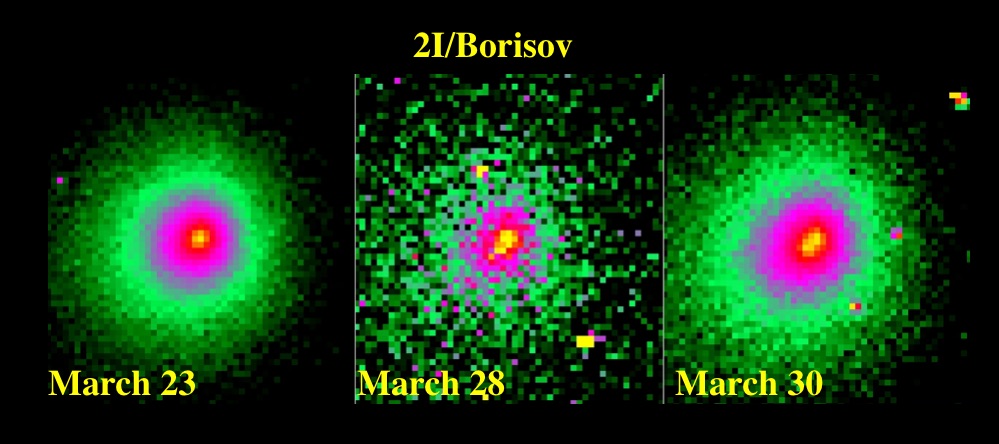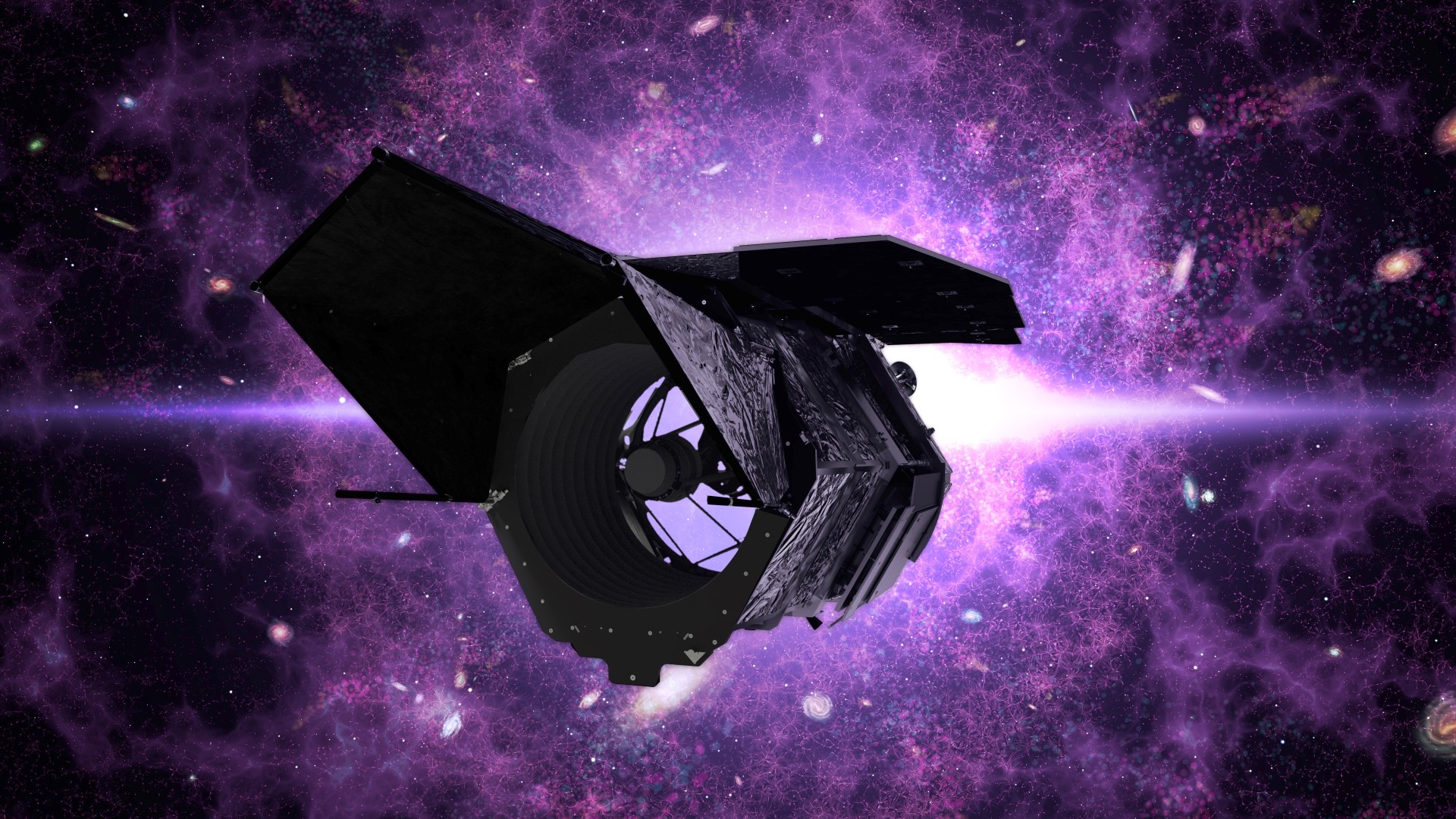Interstellar Comet Borisov is no longer in one piece

Our solar system's second known interstellar visitor doesn't seem to be in one piece anymore.
Photos of the interstellar Comet Borisov taken by NASA's Hubble Space Telescope on March 28 and March 30 show an elongated nucleus that appears to have two distinct components, astronomers announced in a note Thursday (April 2). That's a very different situation than the one Hubble observed on March 23, when the nucleus was a single entity.
These two pieces are about equally bright, but that doesn't mean they're of equivalent size, said UCLA astronomer David Jewitt, who led the new observations.
Related: Interstellar comet: Here's why it's got scientists so pumped up
"Actually, it turns out almost never to be that case," Jewitt told Space.com, referring to similar observations of native-born comets.
"Usually, the main nucleus drops off a piece, and the piece is small compared to the main nucleus — it contains a tiny fraction of the total mass," he said. "But, because it was just plucked out of the nucleus, it's pretty icy. And the ice fizzes and sublimates like crazy, making it a good producer of dust."
Dust is what Hubble is picking up in these photos. So, it's unlikely that Borisov is breaking apart in a significant way, Jewitt added. He estimated that Borisov may have just lost 0.1% to 1% of its total mass, comparing the probable scenario to a car that just dropped a side mirror.
Breaking space news, the latest updates on rocket launches, skywatching events and more!
Still, the researchers don't know for sure that this is the case; it's possible that something more dramatic just happened. Jewitt and his colleagues hope to figure it out, and additional Hubble observations could do the trick.
For example, further Hubble imagery could show researchers how fast the shed fragment is accelerating away from the main nucleus and how long it remains observable. Both of these data points would provide clues about the size of the newly liberated shard, Jewitt said.
Comet Borisov was detected in August 2019 and made its closest approach to the sun in December. It's not necessarily surprising to see a chunk fly off the comet now, four months after this perihelion passage, Jewitt said; the timeline is consistent with two prominent models of comet shedding.
In one of those models, comets begin spinning faster after close solar approaches because the heating they experience causes significant, and asymmetrical, mass loss. It may take several months for the spin-up to get dramatic enough for pieces to go flying off into space, Jewitt said.
In the other model, this same heating causes pressure to build up inside comet nuclei. Eventually, the pressure reaches a pocket of supervolatile ice, such as carbon monoxide or carbon dioxide, resulting in a blowout. And, again, this may take some time. (But comets may be too leaky for this explanation to be viable in most circumstances, Jewitt said.)
There's also the possibility that Comet Borisov got hit by something. But an impact is unlikely to be the explanation, Jewitt said, given how empty space is and how strange Borisov's orbit is compared to objects that were born in our solar system.
Borisov is the second known interstellar body ever spotted in our solar system. The first was the mysterious object 'Oumuamua, whose multilayered weirdness has prompted speculation that it may be an alien spacecraft of some sort.
'Oumuamua was already barreling toward the outer solar system when it was detected. Borisov had not yet rounded the sun in August 2019, meaning astronomers have been able to track it for longer stretches and in greater detail.
This tracking, however, has been compromised recently by the coronavirus pandemic, which has shut down many ground-based telescopes.
"It's entirely possible that the virus is going to kill the comet for most astronomers," Jewitt said.
But Hubble is still operating despite the outbreak, and this iconic eye in the sky is well suited to observe Borisov. Indeed, even the biggest ground-based scopes don't have the resolution required to detect the recent shedding event, Jewitt said.
"So, really, only [the Hubble] Space Telescope can see this sort of thing," he said.
- We could chase down interstellar Comet Borisov by 2045
- 'Oumuamua: The solar system's 1st interstellar visitor explained in photos
- 1st color photo of interstellar comet reveals its fuzzy tail
Mike Wall is the author of "Out There" (Grand Central Publishing, 2018; illustrated by Karl Tate), a book about the search for alien life. Follow him on Twitter @michaeldwall. Follow us on Twitter @Spacedotcom or Facebook.
OFFER: Save 45% on 'All About Space' 'How it Works' and 'All About History'!
For a limited time, you can take out a digital subscription to any of our best-selling science magazines for just $2.38 per month, or 45% off the standard price for the first three months.

Michael Wall is a Senior Space Writer with Space.com and joined the team in 2010. He primarily covers exoplanets, spaceflight and military space, but has been known to dabble in the space art beat. His book about the search for alien life, "Out There," was published on Nov. 13, 2018. Before becoming a science writer, Michael worked as a herpetologist and wildlife biologist. He has a Ph.D. in evolutionary biology from the University of Sydney, Australia, a bachelor's degree from the University of Arizona, and a graduate certificate in science writing from the University of California, Santa Cruz. To find out what his latest project is, you can follow Michael on Twitter.


